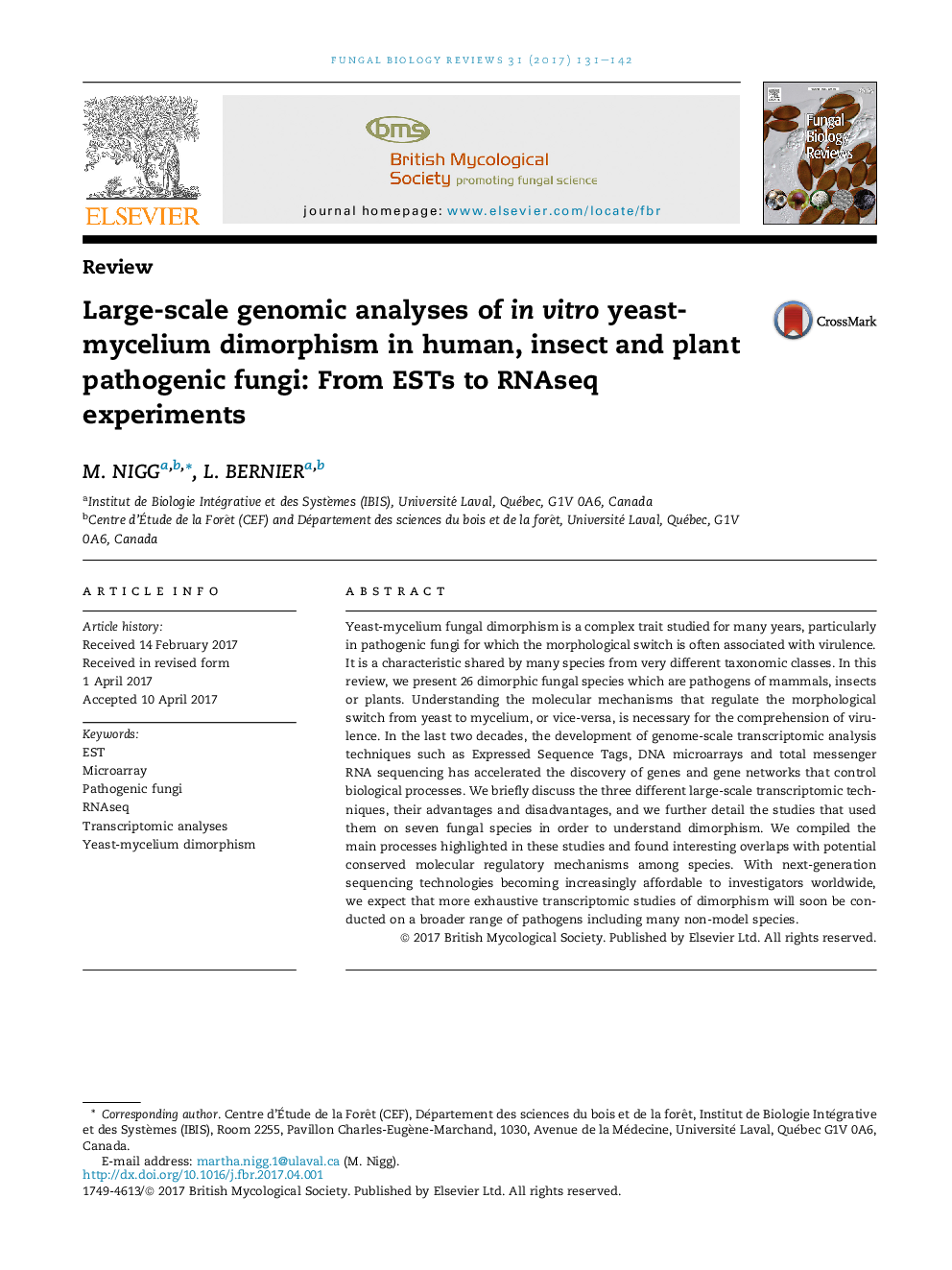| Article ID | Journal | Published Year | Pages | File Type |
|---|---|---|---|---|
| 5532497 | Fungal Biology Reviews | 2017 | 12 Pages |
â¢Many pathogenic fungi are dimorphic.â¢Large transcriptomic analyses of dimorphism have been performed on seven species.â¢Comparisons between studies highlight conserved biological processes among species.
Yeast-mycelium fungal dimorphism is a complex trait studied for many years, particularly in pathogenic fungi for which the morphological switch is often associated with virulence. It is a characteristic shared by many species from very different taxonomic classes. In this review, we present 26 dimorphic fungal species which are pathogens of mammals, insects or plants. Understanding the molecular mechanisms that regulate the morphological switch from yeast to mycelium, or vice-versa, is necessary for the comprehension of virulence. In the last two decades, the development of genome-scale transcriptomic analysis techniques such as Expressed Sequence Tags, DNA microarrays and total messenger RNA sequencing has accelerated the discovery of genes and gene networks that control biological processes. We briefly discuss the three different large-scale transcriptomic techniques, their advantages and disadvantages, and we further detail the studies that used them on seven fungal species in order to understand dimorphism. We compiled the main processes highlighted in these studies and found interesting overlaps with potential conserved molecular regulatory mechanisms among species. With next-generation sequencing technologies becoming increasingly affordable to investigators worldwide, we expect that more exhaustive transcriptomic studies of dimorphism will soon be conducted on a broader range of pathogens including many non-model species.
